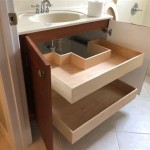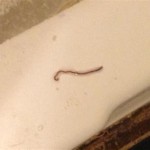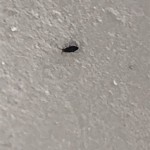How To Remove Mildew From Bathroom Tile Grout
Mildew, a common household nuisance, frequently manifests in bathrooms due to the consistently damp and humid environment. This fungal growth often appears as black or gray spots on surfaces, particularly thriving in the porous grout lines between bathroom tiles. While mildew may appear merely as an aesthetic issue, it can pose health risks, triggering allergies and respiratory problems, especially for individuals with pre-existing conditions. Therefore, effectively removing mildew from bathroom tile grout is essential for maintaining a clean and healthy living space. Several methods exist to address this problem, ranging from simple household solutions to more potent chemical treatments. The appropriate method depends on the severity of the mildew infestation and personal preferences regarding cleaning products.
Successfully eradicating mildew requires a multi-faceted approach, encompassing preparation, cleaning, and prevention. Before initiating any cleaning process, ensuring proper ventilation is crucial for both safety and effectiveness. Opening windows and doors or utilizing a ventilation fan can help dissipate fumes from cleaning agents and facilitate the drying process, inhibiting future mildew growth. Moreover, gathering the necessary cleaning supplies beforehand streamlines the task and minimizes interruptions. This includes selecting the appropriate cleaning solution, protective gear such as gloves and a mask, scrubbing tools, and materials for rinsing and drying.
Preparing the Bathroom for Mildew Removal
Prior to applying any cleaning solution, thoroughly preparing the bathroom environment is paramount. This preparation reduces the risk of damage to surrounding surfaces and enhances the efficacy of the cleaning process. Begin by removing any loose items from the bathroom, such as toiletries, bath mats, and shower curtains. This not only clears the workspace but also prevents these items from being inadvertently exposed to harsh cleaning chemicals. Next, it's important to protect any sensitive surfaces that may be susceptible to damage from the cleaning solution. For example, cover chrome fixtures or glass shower doors with plastic sheeting or painter's tape to guard against potential staining or etching. This precautionary measure minimizes the chance of unnecessary repairs or replacements.
Ventilation is a critical component of bathroom preparation. Mildew removal often involves the use of cleaning solutions that release fumes, which can be irritating or even harmful if inhaled in concentrated amounts. Opening windows and doors to create cross-ventilation allows fresh air to circulate, effectively diluting the concentration of these fumes. If natural ventilation is insufficient, utilizing the bathroom's exhaust fan is recommended. Run the fan throughout the cleaning process and for a period afterward to ensure adequate air exchange. Wearing a mask can further protect the respiratory system from potential irritants.
Finally, before applying any cleaning solution to the grout, pre-cleaning the tile surface is advisable. Dust, dirt, and soap scum can hinder the effectiveness of the mildew removal process. Wiping down the tiles with a damp cloth or sponge removes surface debris and allows the cleaning solution to directly target the mildew embedded within the grout lines. This pre-cleaning step significantly improves the overall outcome of the mildew removal process.
Effective Cleaning Solutions for Mildew Removal
A variety of cleaning solutions can be employed to eliminate mildew from bathroom tile grout, each possessing distinct advantages and disadvantages. The choice of solution depends on various factors, including the severity of the mildew infestation, personal sensitivities to chemicals, and the desired level of environmental friendliness. Household solutions, such as vinegar and baking soda, offer a gentler approach, while bleach and commercial mildew removers provide more potent cleaning power. Understanding the characteristics of each solution allows for informed decision-making.
White vinegar, a common household staple, is a versatile and readily available solution for tackling mild mildew infestations. Its acidic properties effectively kill mold and mildew spores, inhibiting their growth. To use vinegar, simply pour undiluted white vinegar into a spray bottle and saturate the affected grout lines. Allow the vinegar to dwell on the grout for at least one hour, preferably longer for stubborn mildew. Afterwards, scrub the grout with a stiff-bristled brush to loosen the mildew. Finally, rinse the area thoroughly with clean water and dry with a clean cloth. Vinegar's natural composition makes it a safe and environmentally friendly option, although its strong odor may be a deterrent for some individuals.
Baking soda, another common household item, can be used in conjunction with vinegar or as a standalone cleaning agent. Its mild abrasive properties help to scrub away mildew stains, while its alkaline nature inhibits mold and mildew growth. To use baking soda, create a paste by mixing it with water until a spreadable consistency is achieved. Apply the paste to the affected grout lines and allow it to sit for several minutes. Then, scrub the grout with a brush and rinse with clean water. For a more potent cleaning action, combine baking soda with vinegar to create a fizzing reaction that helps to lift mildew and stains. This solution is particularly effective for removing stubborn mildew from textured grout.
Bleach is a powerful disinfectant and mildew killer, suitable for more severe infestations. However, bleach must be handled with caution due to its corrosive properties and potential health risks. Always wear gloves and eye protection when using bleach, and ensure adequate ventilation. To use bleach, dilute it with water according to the manufacturer's instructions. Apply the diluted bleach solution to the affected grout lines and allow it to sit for a short period, typically no more than 10 minutes. Scrub the grout with a brush and rinse thoroughly with clean water. Avoid mixing bleach with other cleaning agents, as this can create toxic fumes. Due to its harsh nature, bleach should be used sparingly and only when other less aggressive options have proven ineffective.
Commercial mildew removers offer a wide range of formulations, each designed to target mildew and mold effectively. These products often contain specialized chemicals and surfactants that penetrate grout lines and kill mildew spores. When selecting a commercial mildew remover, carefully read the label and follow the manufacturer's instructions. Consider the product's active ingredients, potential safety hazards, and suitability for the specific type of tile and grout in the bathroom. Some commercial mildew removers may contain harsh chemicals that can damage certain surfaces or release harmful fumes, so exercise caution and prioritize safety.
Implementing Proper Grout Cleaning Techniques
The effectiveness of any cleaning solution hinges on proper application and scrubbing techniques. Simply applying a cleaning solution without agitation is unlikely to yield satisfactory results. Utilizing a stiff-bristled brush and employing a consistent scrubbing motion ensures that the cleaning solution penetrates the grout lines and effectively dislodges mildew. Moreover, paying attention to detail and addressing all affected areas thoroughly contributes to a comprehensive cleaning process.
Selecting the appropriate scrubbing tool for the task is essential. A stiff-bristled brush, such as a grout brush or toothbrush, provides the necessary abrasion to loosen mildew from the porous grout surface. Avoid using abrasive pads or steel wool, as these can scratch or damage the tile. The brush bristles should be firm enough to penetrate the grout lines but not so stiff as to cause damage. For larger areas, a brush with a longer handle can provide greater reach and reduce strain on the back.
Consistent scrubbing motion is key to achieving optimal results. Work in small sections, applying the cleaning solution and then scrubbing the grout lines with a back-and-forth or circular motion. Apply moderate pressure to ensure that the brush bristles effectively contact the mildew. Avoid scrubbing too vigorously, as this can damage the grout or tile. Focus on scrubbing each grout line thoroughly, paying attention to any areas with particularly heavy mildew growth.
Rinsing the cleaned areas promptly and thoroughly is crucial for removing residual cleaning solution and dislodged mildew. Use clean water to rinse the grout lines, ensuring that all traces of the cleaning solution are removed. A spray bottle or sponge can be used to apply the water, and a clean cloth or towel can be used to wipe away the residue. Repeat the rinsing process as needed until the water runs clear. Failure to rinse properly can leave behind a residue that attracts dirt and mildew, negating the effects of the cleaning process.
After rinsing, thoroughly drying the cleaned area is essential for preventing future mildew growth. Mildew thrives in damp environments, so removing excess moisture inhibits its ability to flourish. Use a clean, dry cloth or towel to wipe down the tiles and grout lines. Pay particular attention to corners and crevices where moisture tends to accumulate. Optionally, use a fan or dehumidifier to further accelerate the drying process. Proper drying is an important step in maintaining a mildew-free bathroom.

Here S How Remove Mildew From Bathroom Tile Grout

How Can I Clean Mildew From Grout Puroclean Hq

How To Clean Mold In Shower Grout Tips And Tricks Certified Care

How To Remove Mold From Shower Caulk Or Tile Grout Fabulously Clean

How To Clean Grout Cleaning Stains

Black Mold In The Shower How To Clean It Kitchen With Matt

How Do I Remove Black Mould From Shower Floor

What Is The Best Way To Clean Shower Grout Mold Anita S Housekeeping

Here S How Clean Mildew Off Bathroom Tile Grout

How To Fix Mouldy Grout Between Tiles Eurotiles Bathrooms
Related Posts







